《中医诊断学》
| 作者 | 北京中医药大学主编 编者 |
|---|---|
| 出版 | 北京:学苑出版社 |
| 参考页数 | 554 |
| 出版时间 | 1998(求助前请核对) 目录预览 |
| ISBN号 | 7507712710 — 求助条款 |
| PDF编号 | 88771438(仅供预览,未存储实际文件) |
| 求助格式 | 扫描PDF(若分多册发行,每次仅能受理1册) |
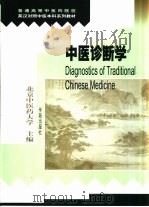
Chapter 1 Introduction1
Section 1 The Main Contents of Diagnostics of TCM2
I. Diagnostic Method2
II. Syndrome Differentiation4
Section 2 The Principles of Diagnosis in TCM5
I.Holism5
II.Applying Four Diagnostic Methods in Combination7
III.Differentiating the Syndrome of a Disease8
Section 3 The Brief History of TCM Diagnostics9
Chapter 2 Observation17
Section 1 Observing Vitality, Color, Figure and Posture17
I.Vitality18
II.Color22
III.Figure29
IV.Posture32
Section 2 Local Observation33
I.Head Observation33
II.Face Observation34
III.Hair Observation34
IV.Eye Observation35
V.Ear Observation38
VI.Nose Observation38
VII.Lip Observation39
VIII.Tooth and Gum Observation39
IX.Throat Observation40
X.Neck Observation40
XI.Chest and Abdomen Observation41
XII.Lumbus and Back Observation42
XIII.Limb Observation42
XIV.Genital and Anus Observation45
XV.Skin Observation46
Section 3 Observation of Excreta50
I.Observing sputum, Saliva, Nasal Discharge and Spittle50
II.Observing Vomitus51
Section 4 Tongue Observation51
I.The Relation Between Tongue and Viscera52
II.Significance of Tongue Inspection52
III.Special Attentions on Tongue Observation54
IV.Concrete Contents of Tongue Diagnosis55
1 Tongue Texture56
2 Tongue Coating64
3 Combining Consideration of Tongue Texture and Coating72
4 Tongue Picture in Critical Conditions76
I.Facial Color Observation77
Section 5 Modern Research on Observation77
II.Eye Observation78
III.Ear Observation79
IV.Nose Examination80
V.Mouth and Lip Observation80
VI.Tongue Examination81
VII.Hand Examination84
VIII.Acupoint Examination84
Chapter 3 Auscultation and Olfaction86
Section 1 Auscultation86
I.Voice86
II.Speech88
III.Respiration89
IV.Cough90
V.Vomiting91
VII.Belching92
VIII.Sigh92
VI.Hiccup92
IX.Sneeze93
X.Bowel Rumbling93
Section 2 Olfaction94
I.Sputum and Nasal Discharge94
II.Odor of Mouth94
III.Sweat94
IV.Odor of Body95
V.Menstrual Blood and Vaginal Discharge95
VI.Stool and Urine95
VII.Vomit95
VIII.Odor of Ward95
Chapter 4 Interrogation96
Section 1 The Purpose and Method of Interrogation96
I.The Purpose of Interrogation96
Section 2 The Contents of Interrogation97
II.The Method of Interrogation97
I.General Data98
II.Life Style and Process98
III.Family History and Anamnesis100
IV.Chief Complaint100
V.History of Present Disease101
Chapter 5 Palpation135
Section 1 Pulse Examination135
I.Location for Pulse Examination137
II.The Method of Pulse-Reading143
III.Normal Pulse146
IV.Morbid Pulse149
V.Key Points for Pulse-taking and Distinguishing among Morbid Pulses169
VI.Female Pulse and Infant Pulse172
VII.Compound Pulse and Solitary Pulse174
VIII.Between Pulse and Symptoms175
Section 2 Body Palpation178
I.Method of Body Pressing178
II.The Main Content179
Section 3 The Modern Research On Pulse-Reading188
I.Objectifying of Pulse-Reading188
II.Analysis Method of Sphygmograph189
III.Mechanism of Pulse Formation190
IV.Clinical Research of Pulse190
Chapter 6 The Eight Principle Syndrome Differentiation192
Section 1 Syndrome Differentiation on the Yin and Yang193
I.Yin Syndrome and Yang Syndrome193
II.Yin Deficiency and Yang Deficiency195
III.Yang Depletion and Yin Depletion196
IV.Yin Rebellion and Yang Rebellion198
I.Exterior Syndrome and Interior Syndrome199
Section 2 Syndrome Differentiation on Exterior and Interior199
II.Syndrome of Both Exterior and Interior201
III.Entering and Exiting202
Section 3 Syndrome Differentiation on Cold and Heat203
I.Cold Syndrome and Heat Syndrome204
II.Coexistence of Cold and Heat207
III.Inter-Transformation Between Cold and Heat207
IV.True and False of the Cold and Heat208
Section 4 Syndrome Differentiation on Deficiency and Excess209
I.Deficiency and Excess Syndromes210
II.Coexistence of Deficiency and Excess213
III.Inter-Transformation Between Deficiency and Excess213
IV.True and False of the Deficiency and Excess214
Section 5 The Modern Research on the Eight Principle Syndrome Differentiation216
Chapter 7 Etiological Syndrome Differentiation217
Section 1 Six Evils217
I.Wind Syndrome218
II.Cold Syndrome220
III.Summer-Heat Syndrome221
IV.Dampness Syndrome223
V.Dryness Syndrome224
VI.Fire Syndrome225
Section 2 Pestilential Evils226
Section 3 Seven Emotions228
Section 4 Improper Diet and Overwork230
I.Food-Retention230
II.Overwork231
Section 5 Parasites and Surgical Trauma232
I.Parasites232
II.Trauma233
I.Deficiency of Qi234
Chapter 8 Qi, Blood and Body-Fluid Syndrome Differentiation234
Section 1 Qi Syndrome Differentiation234
II.Qi Sinking235
III.Stagnation of Qi235
IV.Rebellion of Qi236
Section 2 Blood Syndrome Differentiation236
I.Deficiency of Blood237
II.Bleeding Syndrome237
III.Blood-Heat Syndrome238
IV.Blood Stasis Syndrome238
V.Blood-Cold Syndrome239
Section 3 Syndrome Differentiation of Both Qi and Blood239
I.Qi Deficiency and Blood Stasis239
IV.Failure of Qi to Control Blood240
V.Qi Depletion Resulting from Hemorrhage240
III.Deficiency of Both Qi and Blood240
II.Qi Stagnation and Blood Stasis240
Section 4 Syndrome Differentiation of Body Fluid241
I.Deficiency of Body Fluid241
II.Retention of Body Fluid242
Section 5 Modern Research on Qi, Blood and Body-Fluid Syndrome Differentiation246
Chapter 9 Visceral Syndrome Differentiation248
Section 1 Syndrome Differentiation on Liver and Gallbladder249
I.Liver Qi Stagnation and Liver Qi Transverse Invasion252
II.Liver Fire Flaming Up (Excess Fire in the Liver and Gallbladder)253
III.Ascending Hyperactivity of Liver Yang254
IV.Liver Blood Deficiency255
V.Liver Yin Deficiency255
VI.Liver Wind Stirring Internally256
VII.Retention of Cold in Liver Meridian258
VIII.Liver Qi Deficiency and Liver Yang Deficiency259
IX.Damp-Heat in Liver and Gallbladder260
X.Gallbladder Stagnation due to Phlegm Disturbance261
Section 2 Syndrome Differentiation on Heart and Small Intestine263
I.Heart Qi Deficiency, Heart Yang Deficiency and Loss of Heart Yang264
II.Heart Blood Deficiency265
III.Heart Yin Deficiency266
IV.Blood Stasis in Heart266
V.Fire Blazing in Heart268
VI.Heart Disturbed by Phlegm-Fire268
VII.Phlegm Covering Heart Orifices269
Section 3 Syndrome Differentiation on Spleen and Stomach270
I.Spleen Qi Deficiency272
II.Spleen Qi Sinking272
III.Failure of Spleen to Control Blood273
IV.Spleen Yang Defi?ncy274
V.Spleen Encumbered by Cold-Dampness275
VI.Stomach Cold276
VII.Damp-Heat in Spleen and Stomach277
VIII.Stomach Heat278
IX.Stomach Yin Deficiency278
X.Spleen Yin Deficiency279
XI.Food-Retention in Stomach280
XII.Blood Stasis in Stomach281
Section 4 Syndrome Differentiation on Lung and Large Intestine281
I.Lung Qi Deficiency282
II.Lung Yin Deficiency283
III.Wind-Cold Attacking Lung284
IV.Cold in Lung284
V.Phlegm and Fluid-Retention in Lung285
VI.Wind-Heat in Lung286
VII.Lung Clogged with Heat286
VIII.Dryness in Lung287
IX.Damp-Heat in Large Intestine288
X.Deficiency-Cold of Large Intestine289
XI.Loss of Large Intestine Fluid289
Section 5 Syndrome Differentiation on Kidney and Urinary Bladder290
I.Kidney Yang Deficiency291
II.Kidney Yin Deficiency292
III.Kidney Essence Insufficiency293
IV.Unconsolidation of Kidney Qi294
V.Failure of Kidney to Receive Qi294
VI.Damp-Heat in Urinary Bladder296
Section 6 Syndrome Differentiation on Compound Visceral Syndromes297
I.Qi Deficiency of Both Heart and Lung297
II.Deficiency of Both Heart and Spleen298
III.Blood Deficiency in Both Heart and Liver299
IV.Yang Deficiency of Both Heart and Kidney299
V.Disharmony Between Heart and Kidney300
VI.Qi Deficiency of Both Lung and Spleen301
VIII.Yin Deficiency of Both Lung and Kidney302
VII.Aggression on Lung by Liver Fire302
IX.Yang Deficiency of Both Spleen and Kidney303
X.Disharmony Between Liver and Spleen304
XI.Disharmony Between Liver and Stomach305
XII.Liver and Kidney Yin Deficiency306
Section 7 The Modern Research on Visceral Syndrome Differentiation306
Chapter 10 Meridian Syndrome Differentiation309
Section 1 Syndromes of the Twelve Regular Meridians310
I.Syndrome of Lung Meridian of Hand-Taiyin313
II.Syndrome of Large Intestine Meridian of Hand-Yangming313
III.Syndrome of Stomach Meridian of Foot-Yangming314
IV.Syndrome of Spleen Meridian of Foot-Taiyin314
V.Syndrome of Heart Meridian of Hand-shaoyin315
VI.Syndrome of Small Intestine Meridian of Hand-Taiyang315
VIII.Syndrome of Kidney Meridian of Foot-shaoyin316
VII.Syndrome of Urinary Bladder Meridian of Foot-Taiyang316
IX.Syndrome of Pericardium Meridian of Hand-Jueyin317
X.Syndrome of Triple-Jiao Meridian of Hand-Shaoyang317
XI.Syndrome of Gallbladder Meridian of Foot-Shaoyang318
XII.Syndrome of Liver Meridian of Foot-Jueyin318
Section 2 Syndromes of the Eight Extra Meridians319
I.Syndrome of Du (Governor) Meridian319
II.Syndrome of Ren (Conception) Meridian320
III.Syndrome of Chong Meridian321
IV.Syndrome of Dai Meridian321
V.Syndrome of Yangwei and Yinwei Meridian322
VI.Syndrome of Yangqiao and Yinqiao Meridian323
Chapter 11 Syndrome Differentiation of Exogenous Diseases328
Section 1 The Six Meridian Syndrome Differentiation331
I.Taiyang Syndrome332
II.Shaoyang Synjdrome336
III.Yangming Syndrome337
IV.Taiyin Syndrome338
V.Shaoyin Syndrome339
VI.Jueyin Syndrome341
Section 2 Wei-Qi-Ying-Xue (Defence-Qi-Nutrient-Blood) Syndrome Differentiation344
I.Wei Phase Syndrome346
II.Qi Phase Syndrome346
III.Ying Phase Syndrome348
IV.Xue Phase Syndrome349
Appendix:Modern Researches on Wei-Qi-Ying-Xue Syndrome Differentiation350
Section 3 Triple-Jiao Syndrome Differentiation352
I.Upper-Jiao Syndrome353
II.Middle-Jiao Syndrome354
III.Lower-Jiao Syndrome355
Chapter 12 Medical Record359
Section 1 The Attentive Items for Writing Medical Record359
Section 2 The Content of Medical Record360
第一章 绪论375
第一节 中医诊断学的基本内容375
一、诊法375
二、辨证376
第二节 中医诊断疾病的基本原则377
一、整体观念377
二、四诊合参377
三、辨别病证378
第三节 中医诊断学简史378
第一节 望神色形态382
一、望神382
第二章 望诊382
二、望色384
三、望形体387
四、望姿态388
第二节 望局部388
第三节 望排出物395
第四节 望舌395
一、舌与脏腑的关系396
二、舌诊的临床意义396
三、舌诊时的注意事项397
四、舌诊的内容397
(一)望舌质397
(二)望舌苔401
(三)望舌质合舌苔404
一、面部色诊406
(四)危重舌象406
第五节 望诊的现代研究进展406
二、目诊407
三、耳诊407
四、鼻诊407
五、望口、唇407
六、舌诊408
七、手诊409
八、穴位诊409
第三章 闻诊411
第一节 听声音411
一、声音411
二、语言412
三、呼吸412
七、嗳气413
六、呃逆413
八、太息413
五、呕吐413
四、咳嗽413
九、喷嚏414
十、肠鸣414
第二节 嗅气味414
一、痰与涕414
二、口气414
三、汗414
四、身414
五、经带414
六、二便414
七、呕吐物415
八、病室气味415
二、问诊的方法416
一、问诊之目的416
第四章 问诊416
第一节 问诊之目的与方法416
第二节 问诊的内容417
一、一般情况417
二、生活史417
三、家族史与既往史418
四、主症418
五、现病史418
第一节 脉诊433
第五章 切诊433
一、诊脉部位434
二、诊脉方法437
三、正常脉象438
四、病脉与主病440
五、诊脉要点与鉴别450
六、诊妇女与小儿脉452
八、脉与症的关系453
七、相兼脉象与独异脉象主病453
第二节 按诊455
二、按诊的方法455
二、按诊的内容456
第三节 切诊的现代研究进展460
一、脉诊客观化的研究460
二、脉图分析方法的建立460
三、脉象形成机理的研究460
四、脉诊的临床研究461
第六章 八纲辨证462
第一节 阴阳辨证462
一、阴证与阳证462
二、阴虚证与阳虚证463
三、亡阴与亡阳464
一、表证与里证465
第二节 表里辨证465
四、阴厥与阳厥465
二、表里同病466
三、表里出入467
第三节 寒热辨证467
一、寒证与热证468
二、寒热错杂469
三、寒热转化470
四、寒热真假470
第四节 虚实辨证471
一、虚证与实证472
二、虚实错杂473
三、虚实转化473
四、虚实真假473
第五节 八纲辨证的现代研究进展474
第一节 六淫476
一、风证476
第七章 病因辨证476
二、寒证477
三、暑证478
四、湿证479
五、燥证480
六、火证480
第二节 疫疠481
第三节 七情482
第四节 饮食劳倦483
一、食积483
二、劳倦484
一、虫证485
二、外伤485
第五节 虫证、外伤485
第八章 气血津液辨证486
第一节 气病辨证486
一、气虚证486
二、气陷证486
三、气滞证487
四、气逆证487
第二节 血病辨证488
一、血虚证488
二、失血证488
三、血热证488
四、瘀血证489
五、血寒证489
第三节 气血同病辨证489
四、气不摄血证490
三、气血两虚证490
五、气随血脱证490
一、气虚血瘀证490
二、气滞血瘀证490
第四节 津液病辨证491
一、津液不足证491
二、津液不化证491
第五节 气血津液辨证的现代研究进展494
第九章 脏腑辨证496
第一节 肝与胆病辨证496
三、肝阳上亢证498
一、肝气郁结与肝气横逆证498
二、肝火上炎证498
四、肝血虚证499
五、肝阴虚证499
六、肝风内动证499
七、寒滞肝脉证500
八、肝气虚与肝阳虚证500
十、胆郁痰扰证501
九、肝胆湿热证501
第二节 心与小肠病辨证502
一、心气虚、心阳虚与心阳暴脱证503
二、心血虚证503
三、心阴虚证504
四、心血瘀阻证504
五、心火亢盛证505
六、痰火扰心证505
七、痰迷心窍证506
第三节 脾与胃病辨证506
一、脾气虚证507
二、脾气下陷证507
三、脾不统血证508
四、脾阳虚证508
五、寒热困脾证508
七、脾胃湿热证509
六、胃寒证509
九、胃阴虚证510
十、脾阴虚证510
八、胃热证510
十一、食滞胃脘证511
十二、血瘀胃脘证511
第四节 肺与大肠病辨证511
一、肺气虚证512
二、肺阴虚证512
三、风寒束肺证512
四、寒邪客肺证513
五、痰饮停肺证513
六、风热犯肺证514
七、热邪壅肺证514
八、燥邪犯肺证514
十一、大肠液亏证515
第五节 肾与膀胱病辨证515
十、大肠虚寒证515
九、大肠湿热证515
一、肾阳虚证516
二、肾阴虚证517
三、肾精不足证517
四、肾气不固证517
五、肾不纳气证518
六、膀胱湿热证518
第六节 脏腑兼病辨证519
一、心肺气虚证519
二、心脾两虚证519
三、心肝血虚证520
四、心肾阳虚证520
五、心肾不交证520
九、脾肾阳虚证521
八、肺肾阴虚证521
六、肺脾气虚证521
七、肝火犯肺证521
十、肝脾不调证522
十一、肝胃不和证522
十二、肝肾阴虚证522
第七节 脏腑辨证的现代研究进展523
第十章 经络辨证525
第一节 十二经脉病证525
第二节 奇经八脉病证531
第十一章 外感病辨证534
第一节 六经辨证535
一、太阳病证535
二、少阳病证537
三、阳明病证537
五、少阴病证538
四、太阴病证538
六、厥阴病证539
第二节 卫气营血辨证539
一、卫分证540
二、气分证540
三、营分证541
四、血分证541
附:卫气营血辨证的现代研究进展542
第三节 三焦辨证543
一、上焦病证543
二、中焦病证544
三、下焦病证544
第十二章 病案547
第一节 书写病案的注意事项547
第二节 病案书写的内容547
1998《中医诊断学》由于是年代较久的资料都绝版了,几乎不可能购买到实物。如果大家为了学习确实需要,可向博主求助其电子版PDF文件(由北京中医药大学主编 1998 北京:学苑出版社 出版的版本) 。对合法合规的求助,我会当即受理并将下载地址发送给你。
高度相关资料
-

- 中医诊断学
- 1995 上海:上海科学技术出版社
-
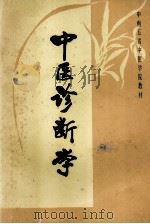
- 中医诊断学
- 1988.06 广东高等教育出版社
-
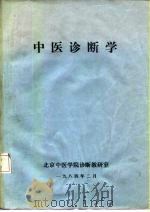
- 中医诊断学
- 1984
-
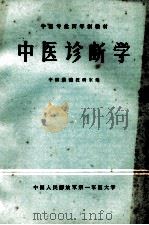
- 中医诊断学
- 1985
-

- 中医诊断学
- 2020 济南:山东科学技术出版社
-
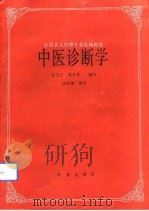
- 中医诊断学
- 1991 北京:华夏出版社
-
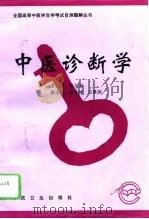
- 中医诊断学
- 1996 北京:人民卫生出版社
-

- 中医诊断学
- 1993 太原:山西高校联合出版社
-
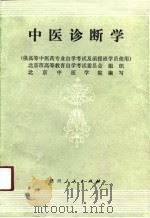
- 中医诊断学
- 1990 贵阳:贵州人民出版社
-

- 中医诊断学
- 1991 成都:四川科学技术出版社
-

- 中医诊断学
- 1998 北京:学苑出版社
-
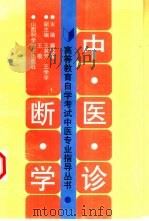
- 中医诊断学
- 1998 太原:山西科学技术出版社
-
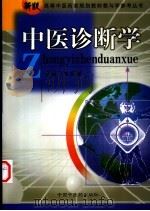
- 中医诊断学
- 1997 北京:中国中医药出版社
-
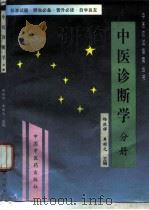
- 中医诊断学
- 1997 北京:中国中医药出版社
-
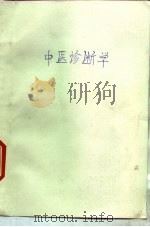
- 中医诊断学
- 1988 成都:四川科学技术出版社
提示:百度云已更名为百度网盘(百度盘),天翼云盘、微盘下载地址……暂未提供。➥ PDF文字可复制化或转WORD